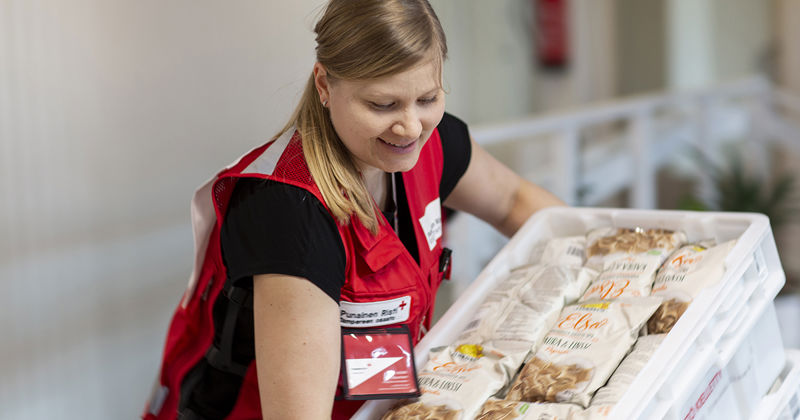Making use of food waste – sorting shops’ food waste as part of food aid

Food aid makes use of edible food waste. The sorting of food waste in shops and the distribution of food is carried out by volunteers.
Finnish Red Cross volunteers sort edible fruit and vegetables from the food waste of shops and transport them to be distributed to those in need.
The fruit and vegetables are supplied for distribution in food aid, but they are also used in communal meals and the social kitchens of various operators.
“I see how the distribution of edible waste from shops helps a wide range of people in different life situations, such as people in need of food aid, mental health rehabilitees, people with eating disorders, children, young people and older people,” says Tarja Sipilä, who trains other volunteers in the Lapland region.
This sorting of fruit and vegetable waste is aimed at recovering edible fruit and vegetables from commercial food waste. Sometimes the sorted batches of food waste also include dairy and cereal products.
“The volunteers sort the products in the shop, according to rules agreed upon with the shop. The sorting does not create any extra costs for the shop, and the shop premises are safe for the volunteers,” says Sipilä.
Using food waste is eco-friendly and diversifies many people’s diets
“This practice is good for the environment and climate, as it reduces food waste and biowaste. It has also resulted in a significant increase in the amount of food distributed as food aid, and the variety and healthiness of the food in particular,” says Sipilä.
“Not everyone has the opportunity to buy fruit and vegetables otherwise,” Tarja Sipilä adds.
The model was originally developed in the Green Kemi project, in which Sipilä previously worked. Now the model has been transferred and applied to the Finnish Red Cross, and Sipilä continues to work with sorting as a volunteer in her retirement.
“What makes this approach special is the effective network cooperation. It benefits many different operators and thus reaches a wide range of people. Cooperation with shops has also been very good and smooth in terms of the sorting. The shops have been pleased, and the model has also attracted interest elsewhere in Finland,” Sipilä says.
Currently, the model is in use as such in the Kemi and Rovaniemi areas of Lapland.

